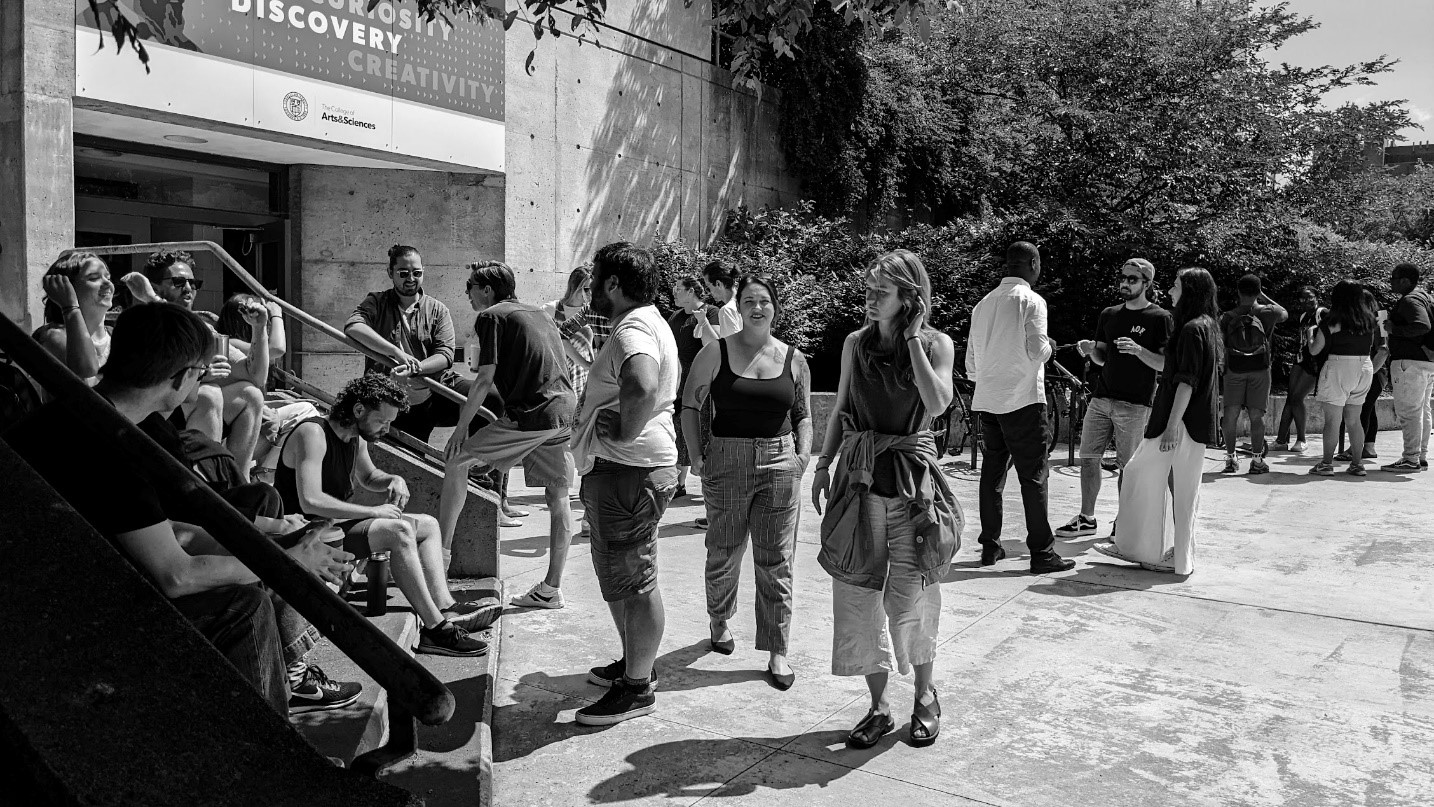
Unit for Criticism SCT Fellow, Summer 2022
As an Architect at the Theory Camp
There is something admirable about intellectuals who think freely, especially in the eyes of those like me coming from a technical background. My vocation in architecture trained me to address real-life problems, be practical, and focus on design solutions. Doing predominated over thinking, and what could not be manifested into a built reality or seemed too speculative thus did not deserve much attention. During my Ph.D. program in Illinois, frequenting the Unit lectures, I was gradually exposed to an expanded life of the mind. I was increasingly convinced that thinking as a political-intellectual activity could be as valuable and practical as designing. For me, this was a crucial turn from ‘What architecture should I make?’ to ‘What is architecture?’ With the support of the Nicholson Fellowship, I spent six weeks of summer in the School of Criticism and Theory at Cornell University, marking a pivotal phase in this transition.
Google’s n-gram viewer indicates that the use of the word ‘interdisciplinary’ has been steadily increasing since 2010. Surely this corresponds to its upsurge in academia, as many are convinced that traditional disciplinary inquiries are slowly becoming saturated. Since vocational pedagogies rarely encourage us to question the foundations of our disciplines, interdisciplinary paradigms are necessary to critique hegemonies that, to the uncritical eye, masquerade as norms. But it is also important to ask how interdisciplinarity works. Can critical theories provide a common ground for interdisciplinary inquiries? The SCT provided a generative space where over 70 scholars from different disciplines, from philosophy to military history, literature to visual and cultural studies, musicology to political science, engaged in discussions. These often flowed from serious seminars during the day to more creative speculations at the pub, lasting into the night. The process of seeking answers to questions posed from an interdisciplinary perspective then led to more questions. From theology to theory, human abilities to post-humanism, neo-feudalism to socialism in the 21st century, nothing seemed too ambitious to discuss with this vibrant cohort. Soon, it seemed that not only did the lecture halls of Cornell’s historic campus resonate with our deliberations, but perhaps even the hills, gorges, and vineyards of central New York State could not resist becoming subjects of our hermeneutic pursuits. Our metaphysical exercise was intense, but it paled in comparison to the physical exhaustion of climbing Ithaca’s steep hills that were once the traditional homelands of the Cayuga Nation.
Professor Andrew Cole’s Dialectic of Space seminar, in which I participated, made it clear that questioning normalized structures pre-requires an engagement with them. Consequently, with the privilege of being scholars, how can we imagine a more just and equitable future unless we begin by investigating the history of our unjust present? The seminar invited us to “think critically about the politics of place and the problem of space, and to understand history to be materially real and spatially manifested.” (Cole, Seminar Description, SCT 2022) Our first week’s discussion included Saidiya Hartman’s Wayward Lives, Lucretius’ On the Nature of Things, and the comic strip Richard McGuire’s Here -- what an eclectic mix! Unsurprisingly, we also had to begin with Kant and Hegel! In interrogating our “European masters,” we were also changed by our readings of them. As we progressed through Lefebvre, Jameson, Nietzsche, Benjamin, and Panofsky, we thought about canonicity and its influence on the mechanisms of our interpretations. We challenged ourselves to be constantly reflexive of our readings for an intense six weeks. Closing with Fanon, the seminar problematized the reciprocal relationship between ideology and the built environment and opened doors to the spatial turn in the humanities.
As an architect amongst theorists, it was rewarding to be surrounded by people prioritizing reading and debating over how to read and interpret texts. It was uniquely satisfying to see such diverse researchers – medievalists and post-colonialists, ethnographers and archivists, Marxists and new materialists - having productive discussions while fluently handling contradictory worldviews. As professors presented provocative lectures, students were invited to ask probing questions and make candid comments, and the question and comment periods often lasted for two hours. It was humbling to see these distinguished speakers acknowledge frankly the limitations of their work.
While the seminars, lectures, and mini-seminars of the program were highly enriching, what was most valuable about my SCT experience was the warmth and collegiality I received from my colleagues. Together we read long texts, quizzed each other before class, and allowed ourselves to skip a few pages at times. We not only connected on an academic-intellectual plane but also bonded over food, beverage, house parties, and weekend trips. It was as much a summer of intense critical theory as it was of enduring friendships.
